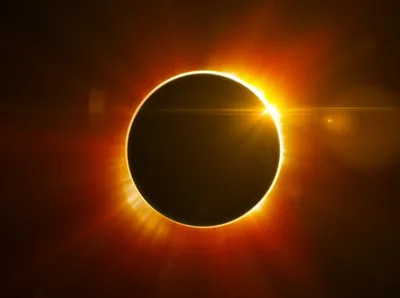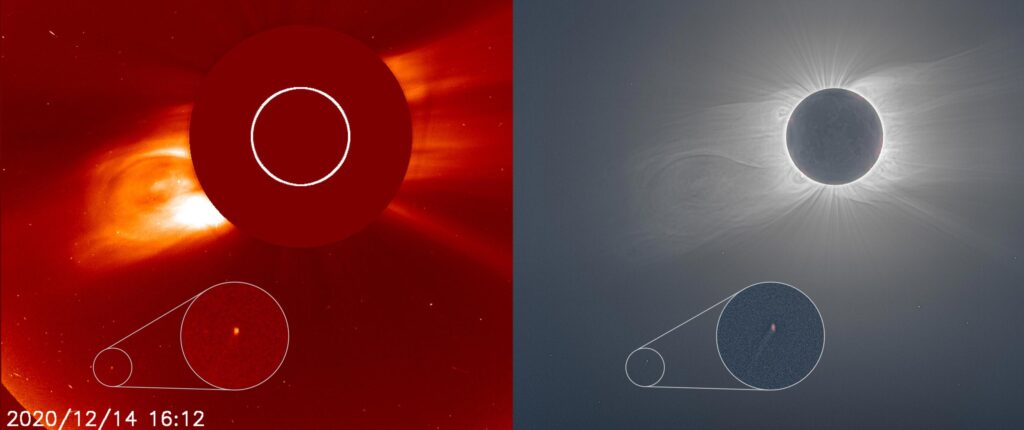Mark your calendars for April 8, 2024, because North America is about to witness a solar eclipse unlike any other! This celestial spectacle promises to be a once-in-a-lifetime experience, filled with awe-inspiring sights and the chance to witness the sun in a whole new light. Here are six reasons why you absolutely can’t miss this extraordinary event:
A record-breaking blackout: Witness night descend in the middle of the day!
The 2024 eclipse boasts the longest totality experienced in the United States since 1806. Imagine gazing skyward and seeing the entire sun disappear for a staggering 4 minutes and 28 seconds in some areas of Mexico. As the moon completely covers the sun’s fiery face, a day will turn into an eerie twilight, allowing you to experience the night sky in the middle of the afternoon. This extended period of darkness is a rare opportunity to witness the sun’s faint corona, the wispy outer atmosphere that becomes visible only during a total eclipse.

Sun on Fire! Witnessing the Solar Corona in all its Glory
This eclipse coincides with a period of peak solar activity known as solar maximum. During this time, the sun’s magnetic field becomes more dynamic, leading to increased solar flares and a more prominent corona. This translates into a visually stunning spectacle. The corona, which typically appears faint and wispy, will be larger, brighter, and more symmetrical during the eclipse. Imagine a majestic sunflower glowing with intense energy – that’s the kind of breathtaking view you can expect! The last time North America witnessed a total solar eclipse during solar maximum was in 1979. The 2024 eclipse offers a rare chance to experience the sun’s vibrant activity firsthand, showcasing a display of solar power that’s both awe-inspiring and humbling.
Darkness Fit for a King: A Uniquely Dark Eclipse for Astrophotographers and Skywatchers Alike
The darkness experienced during totality is directly related to the eclipse’s magnitude, which represents the portion of the sun’s diameter obscured by the moon. A higher magnitude results in a wider path of totality and a deeper darkness. The 2024 eclipse boasts a magnitude of 1.05, offering a significantly darker experience compared to the 2017 eclipse (magnitude 1.03). This deeper darkness allows for the naked-eye observation of not only Venus, the brightest planet in our solar system, but potentially Jupiter as well. Imagine the thrill of seeing these celestial bodies emerge like diamonds scattered across the darkened sky – a truly unforgettable sight for astronomy enthusiasts and casual skywatchers alike.

A Celestial Dance: A Chance to Spot a Comet Joining the Solar Spectacle
While not guaranteed, there’s a possibility a comet might grace the skies during the 2024 eclipse, adding an extra layer of intrigue and excitement to this already extraordinary event. Comet 12P/Pons-Brooks, also known as the “Devil Comet,” is predicted to be in the vicinity, approximately 25 degrees from the sun and near Jupiter. At a potential magnitude of +4.7, the comet might be visible to the naked eye under ideal conditions, especially if it experiences an outburst, a phenomenon it has exhibited in the past. Binocular users can increase their chances of spotting the comet, while long-exposure photography is likely to reveal its presence definitively. The possibility of a comet joining the solar eclipse creates a unique celestial ballet, offering a chance to witness two awe-inspiring astronomical phenomena happening simultaneously.
Millions to Witness History
The 2024 eclipse is poised to be the most-watched total solar eclipse in North American history. The path of totality stretches across parts of 15 U.S. states, encompassing an estimated 31 million people, according to GreatAmericanEclipse.com. When combined with northern Mexico and Canada, the total number of potential viewers reaches a staggering 40 million. This surpasses the estimated 12 million who witnessed the 2017 eclipse, signifying a surge in public interest in this celestial phenomenon. The eclipse offers a unique opportunity to connect with science and the wonders of the universe. Imagine the collective gasp of awe as millions witness the sun disappear and the corona comes alive – a shared experience that transcends borders and cultures.
City Lights Out! A Total Eclipse for Urban Dwellers: A unique aspect of the 2024 eclipse is that roughly a quarter of those experiencing totality will do so from within a city. Major metropolitan areas like Mazatlán and Torreón in Mexico, Dallas-Fort Worth, Austin, and parts of San Antonio in Texas, Little Rock, Indianapolis, Cleveland and several Canadian cities like Hamilton, Niagara, St. Catharines, Kingston, and Montreal all fall within the path of totality. This translates to an estimated 10 million urban dwellers who will have the opportunity to witness this celestial marvel from their doorsteps, without needing to travel to remote locations.
The 2024 total solar eclipse is shaping up to be a truly remarkable event, filled with scientific wonder, historical significance, and the potential for breathtaking celestial sights. Whether you’re a seasoned astronomer or a curious observer, this eclipse offers a unique opportunity to witness the power and beauty of the universe firsthand. So mark your calendars, prepare your safety glasses, and get ready to be blown away by this unforgettable celestial spectacle!



















